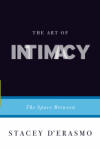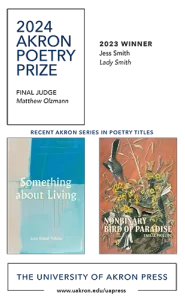The Art of Intimacy
The Art of Intimacy: The Space Between by Stacey D’Erasmo is an addition to the Graywolf Art of series, edited by Charles Baxter. Discussions focus on examples from literary works: what effect is achieved? How? Was this the writer’s intent? The writer becomes alive within the work, making choices in a conversation that includes the reader.
The Art of Intimacy: The Space Between by Stacey D’Erasmo is an addition to the Graywolf Art of series, edited by Charles Baxter. Discussions focus on examples from literary works: what effect is achieved? How? Was this the writer’s intent? The writer becomes alive within the work, making choices in a conversation that includes the reader.
D’Erasmo begins her exploration by describing a photographic exhibit in which the photographer, Nan Goldin, pairs her work with images from painting and sculpture from the Louvre, creating “impressions, painstakingly rendered, of living human beings, now gone . . . vivid fossils of intimacy.” This provides a starting point to define intimacy within a work of fiction:
What makes it “work” or not? One way into this delicate matter might be to look not so much at individual characters and their motivation . . . or even at their interactions per se, but at exactly what is in that space between them, the linkage. . . . Where do they meet? How does the text bring them together? What electricity do we feel from the juxtaposition?
This book attempts a typology of ways to use language to explore the unknown space of connection.
D’Erasmo makes a compelling case for use of the subjunctive mode: “If I saw you. If I had found you . . .” She points out that “it’s an optical illusion that is also potentially quite a powerful tool for summoning up desire and loss simultaneously.” As an example, in William Maxwell’s novel So Long, See You Tomorrow, a teenage boy fails to acknowledge and reach out to another boy who has experienced a devastating tragedy. This fleeting moment gives way to regret and an ongoing sorrow. “From this failure, an intense act of imagining takes place as the narrator reconstructs the entire story . . .” Maxwell allows the narrator, out of emotional necessity, to create a subjunctive empathy for the experience of the other boy that he was not able to do in real life.
D.H. Lawrence crosses boundaries through the physical. Sexual intimacy becomes a life-changing disturbance that brings empathic closeness which D’Erasmo suggests is not unrelated to the subjunctive, “as if” as a meeting place. Characters “use their bodies to break open their psyches, to know something, get somewhere that isn’t available by any other means . . . the only boat out of a crushing psychological and cultural localness.”
Image, simile, or metaphor creates intimacy. D’Erasmo points out that, through this means, characters may be united by the author in ways of which they are not fully conscious. An example is image of candlelight that unites the company at the Ramsays’ dinner party in Virginia Woolf’s To the Lighthouse: “In Woolf, the image is the meeting ground for any and all human beings . . . it is communion, erotic space; it is transformational . . . capable of moving outside the confines of time and space, leaping at will from person to person.” The candle flames create connection and dissolve boundaries between inside and out, dark and light, known and the encroaching unknown darkness of death.
More complex is the discussion of intimacy that is created by destructive force. D’Erasmo asserts: “One method by which writers create a space between in which to do intimate damage, is the use of blur, penumbra, and darkness.” The stakes are ambiguous as in the relationship between the captain and the murderer he takes on board and conceals in Joseph Conrad’s The Secret Sharer. A crime against another may take place in language only, through “linguistic ruthlessness.” The reader becomes an ambivalent witness in the dark.
D’Erasmo discusses contemporary works, which require intimacy between the author and the reader “in the white space.” More is required from the reader than in conventional narrative. In Italo Calvino’s If on a winter’s night a traveler, the authorial voice is always hyper-aware of the presence of the reader where the as if “. . . is a fold, another tale, a space of nearly limitless possibility.” Play it as it Lays by Joan Didion, presented in fragments, requires the reader to actively piece together some kind of moral and narrative coherence. In The Water Cure by Percival Everett, the unreliable narrator/author leads the reader from rage at the murderer of his child into the moral abyss of cruel revenge not fully comprehended as it unfolds in fragments.
“Why meet?” D’Erasmo asks. “It’s all too easy to throw a little intimacy, especially damaged intimacy, at a narrative to get it to seem serious and literary.” She argues that we do not know what will happen, “if only we have the courage to look closely.” The intimacy between writer and characters comes in the exploration. This work provides helpful light for the search.





